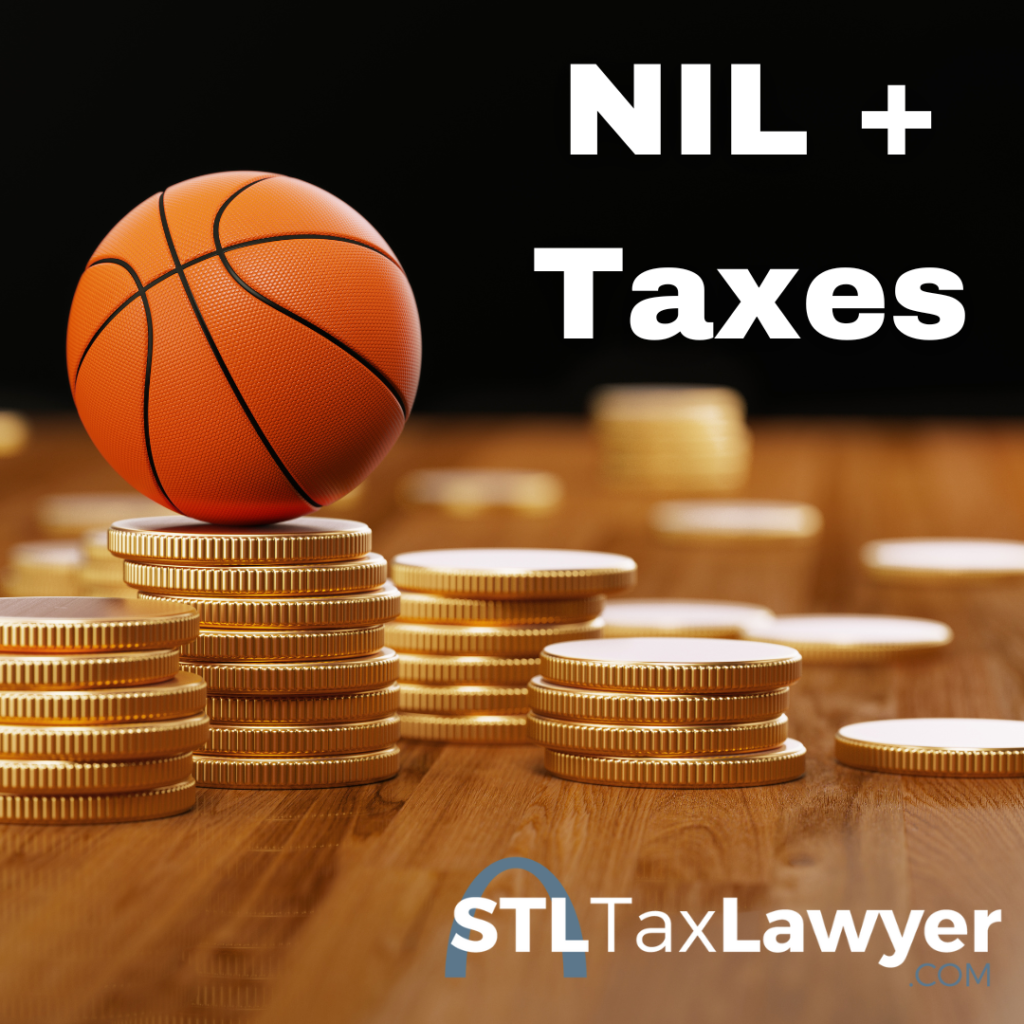Five on Fridays: NIL & Taxes 2023 Update
With March Madness underway, and the mid-April tax deadline approaching, student athletes who receive NIL money should be mindful of the related tax consequences and money saving opportunities.

Below outlines five key considerations for student athletes related to NIL (Name, Image, Likeness) and taxes:
1. Tax Deadlines
Student athletes who received NIL payments in 2022 will most likely need to file federal and state/local tax returns by April 18, 2023. You can file an automatic extension with the IRS giving you until October to file, but that does not extend the payment deadlines.
If you wait until October to file and don’t make sufficient quarterly estimated payments and/or payment with your extension, you may face penalties.
2. SALT
State and local taxing authorities generally tax income where it is earned. Thus, you may be liable for state and local taxes in various jurisdictions depending on where you live, work, attend school and/or carry on your NIL activities.
State and local tax, or SALT as it’s called by tax nerds, can be an extremely complicated area of tax law, so you’ll want to make sure you’re getting trusted advice on where all you may be required to file returns and pay taxes.
3. Independent Contractor vs. Employee
Most athletes receive NIL payments as independent contractors, not employees, and will receive Forms 1099-NEC, showing amounts paid to them as non-employee compensation.
As a non-employee, the IRS considers these athletes self-employed and will impose self-employment tax on top of ordinary income tax.
Now the good news! As a self-employed independent contractor, you may deduct your related business expenses.
For example, you can claim mileage and/or actual vehicle expenses for driving to/from NIL appearances, and possibly even to/from games and practice. You may also deduct payments to legal/tax professionals, consultants, managers, and anyone else who provides services to you within your entourage.
When you pay others, just be sure to keep track of the amounts paid, obtain a W-9 from them, and issue them 1099s at the end of the year. This will help bolster the deductibility of the expenses.
4. Retirement Savings Opportunities
Being self-employed also allows student athletes to take advantage of tax-favored retirement accounts, such as SEP IRAs and solo 401(k)s, allowing them to sock away as much as $56k per year, pretax.
A SEP IRA, which is extremely easy to set up, allows you to contribute 25% of your income (up to $66,000 for 2023 and $61,000 for 2022) to a retirement account and deduct that amount from your adjusted gross income.
Example:
You earn $200,000 in NIL income, after deductible expenses. You can contribute $50k (25% of income) to your SEP IRA. That $50k avoids federal income tax, resulting in current year tax savings of $12,500 (assuming 25% effective tax rate).
5. What if you spent the money and can’t pay the amount of tax owed?
Whatever you do, file your tax returns, even if you can’t afford to pay the tax (I.e., you spent the money).
Not filing could constitute tax evasion, a felony, but it will also lead to substantial failure-to-file and failure-to-pay penalties. You may also lose out on the ability to claim valuable deductions.
If you’re issued a 1099, the IRS and state taxing authorities also get a copy, and it’s probably just a matter of time before they hit you with a tax bill via what’s called a substitute for return.
File the return, and if you can’t afford to pay what you owe, you may qualify for several collection alternatives, including an installment agreement or an offer in compromise.
For questions about taxes and/or the legal consequences of receiving NIL money, be sure to consult with a trusted tax/legal advisor.


